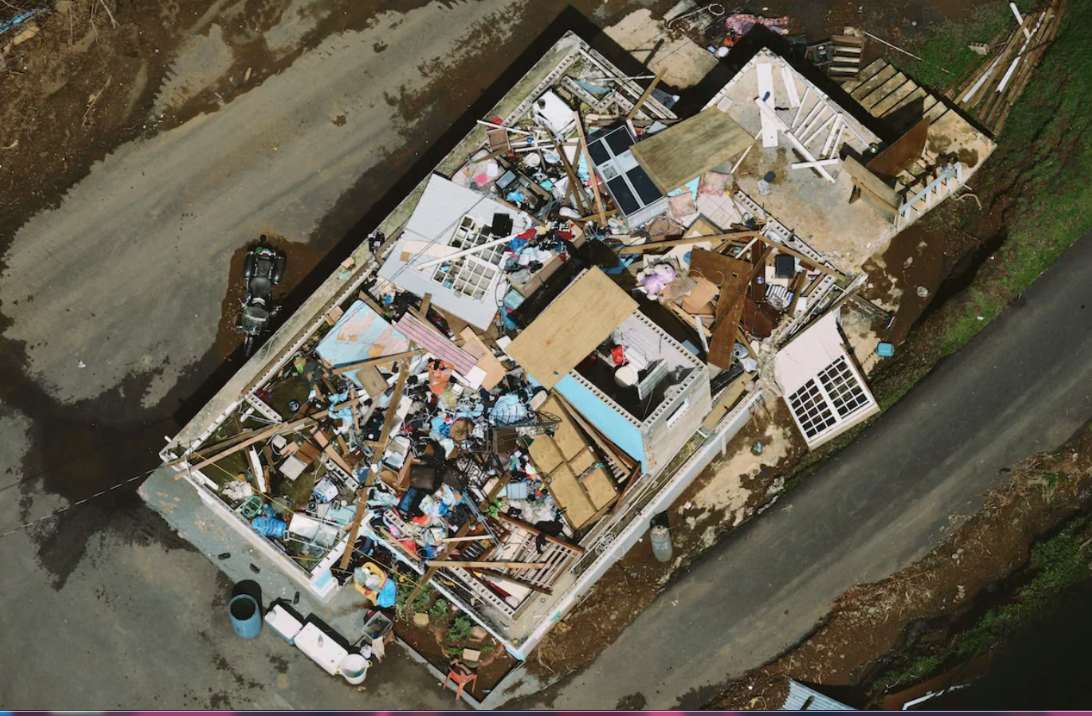By Crystal Tatis
Hurricane Irma and María were the most powerful and destructive hurricanes ever recorded in the Atlantic. The destruction and loss throughout the Caribbean are still being quantified; still, uncounted lives, property and critical infrastructure have been lost in over ten countries. In Puerto Rico, over 900 people have been cremated, even if the official death toll is only listed as 51 (Osborne, 2017). The office of Governor Ricardo Roselló has reported that about 20% of the island has service. The island is struggling to keep its vulnerable populations alive as hospitals deal with the lack of power and low supplies for medications. Some of the key resources needed are food, shelter, water and essential non-food items.
3D printing offers a powerful tool set to revolutionize industries across the world because of its minimal costs and the easiness of digitally transferring a design before printing it locally. A company who actually does this every day is Field Ready, a nonprofit organization that focuses on the delivery of humanitarian relief using a variety of technologies, like 3D printers and laser cutters. Field Ready has said that the supply chain for disaster relief projects includes agents, middlemen, functionaries, and bureaucrats who insert themselves into the process of delivering goods and services to affected areas. Those interactions lead to heavy lead times, and require high-quality information systems and well-trained staff. But Field Ready adds that all those efforts need to be precisely focused on the needs of disaster affected people. Field Ready believes in sharing this helpful information and skills to others through training and pioneering innovative approaches (Halterman, 2015). The impact of the 3D printing technology has already dramatically improved the efficiency in aid delivery by quickly meeting needs and cutting procurement costs.
The team (composed of a leader, engineer and designer) collaborates with health practitioners to design solutions, such as medical disposables, to be 3D printed in the field. Field Ready has created local manufacturing kits to facilitate the process of 3D printing to others interested. Field Ready makes sure the design works, that all the documentation you might need (design files, templates, instructions) is available and is sufficient for someone who hasn’t made the item before to make one. “For example if a water pipe is broken or leaking, we can manufacture a new pipe fitting and put it in place,” said Eric James, the Director of Field Ready, in an interview with CBS Chicago.
Like any new technology, it remains to be seen how feasible and cost-effective it is to ship 3D printers to a disaster-hit area. To measure if it is cost-effective, the investment put into the machine has to provide a sufficient number of tools and devices to recover the machine’s investment cost. Also, a trained workforce may be needed to operate said printers to manage any last minute design changes. Another challenge with 3-D printing is supplying electricity in these disaster areas, outside of a using a power generator. Companies are looking for the best way to tackle said challenges by running the machines on solar power, which is essential for situations where the power lines have been severed. 3D printing is constantly expanding its use; researchers from a Laboratory in California have come up with an approach for using lasers and a rapid cooling process to fuse metal alloy particles together in a dense, tightly packed structure. Tests showed that under certain conditions the final 3D printed stainless steels were up to three times stronger than steels made by conventional techniques. It won’t be long before other groups follow their leads to make parts for everything from fuel tanks to pressure tubes. And that, in turn, will likely only increase the growing fervor over 3D printing (Service, 2017).
A new technique is set to strengthen 3D printed stainless steel parts, such as this previously printed rocket engine component. LAWRENCE LIVERMORE NATIONAL LABORATORY
To read about Field Ready’s work, click here
About the Photographer: Eliud Echevarría is a photographer based in Puerto Rico who’s currently working as a photojournalist for FEMA. You can find more of his work on his website, Facebook, and Instagram.
Works Cited
Halterman, T. (2015, April 06). Power to the People — 3D Printing Being Used in Disaster Relief. Retrieved from 3D Printing: https://3dprint.com/56149/3d-printing-disaster-relief/
Osborne, S. (2017, October 31). Hurricane Maria: More than 900 people in Puerto Rico have died after the tropical storm. Retrieved from Independent : http://www.independent.co.uk/news/world/americas/puerto-rico-hurricane-maria-died-people-killed-island-us-territory-power-shortages-energy-a8027886.html
Roobeek, R. (2014, October 23). 3D printing and the future of disaster relief. Retrieved from Aljazeera: http://www.aljazeera.com/indepth/features/2014/10/3d-printing-future-disaster-relief-20141016825642208.html
Service, R. F. (2017, October 30). 3D printing doubles the strength of stainless steel. Retrieved from Sciencemag: http://www.sciencemag.org/news/2017/10/3d-printing-doubles-strength-stainless-steel

